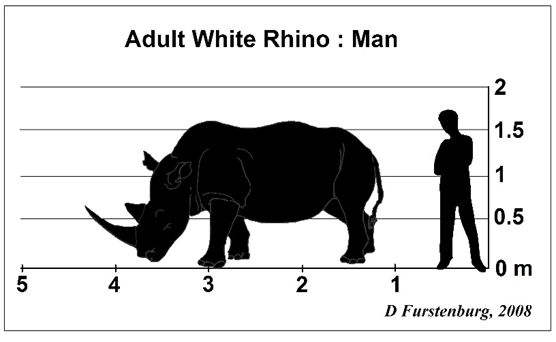The Rhinoceros (aka Rhino): Giants of the Grasslands
- Deon Furstenburg

- Aug 5
- 2 min read
Africa’s rhinos are represented today by just two surviving species: the white (square-lipped) rhino (Ceratotherium simum simum) and the black (hook-lipped) rhino (Diceros bicornis), which itself comprises four regional subspecies. In Asia, three additional species persist: the Indian, Javan, and Sumatran rhinos, each facing their conservation challenges.

Ancient Origins
Rhino ancestors first emerged in Eurasia roughly 36 million years ago, including iconic forms like the woolly rhino (Coelodonta). The lineage that led to today’s black rhino appeared in northern Africa about 6.8 million years ago; white rhinos followed in central Africa around 4 million years ago, adapting to increasingly grassy habitats.

Built for Heavy Grazing and Browsing
White Rhino (C. simum simum)
The white rhino's broad, flat upper lip, which can reach up to 20 cm in width, makes it ideal for grazing on low grasses.
A specialized neck bone locks the head in a downward position, minimizing muscular effort while feeding.
Adults can weigh as much as 2 700 kg.

Black Rhino (D. bicornis)
The black rhino features a pointed, prehensile lip that hooks around leaves and twigs, ideal for browsing shrubs and trees.
A muscular neck allows the head to lift and reach into foliage.
Mature individuals tend to be slightly smaller, reaching a maximum weight of approximately 1400 kg.

Both species of rhino are true mega-herbivores, their padded, cushion-like feet supporting immense weight as they browse and graze across savannahs and woodlands. With lifespans of 35–40 years, rhinos spend much of their time feeding, wallowing in mud to cool down and repel parasites, or rubbing against rocks and stumps to scratch hard-to-reach spots.
Social Structure and Behavior of Rhino
White rhinos form small family groups, often led by a dominant cow and including her subadult offspring.
Black rhinos are predominantly solitary; cows and bulls establish overlapping territories and meet only briefly—around six to seven days—during the mating season.
Both species are capable of surprising bursts of speed; black rhinos can charge at up to 45 km/h, occasionally mistaking campfires or lights for threats and charging into them.

Conservation Status
Rhinos face dire threats from poaching and habitat loss. Their horns, made of ever-growing keratin fibers, fetch up to R60 000 per kilogram on the black market, driving illegal killing across Africa. Today, only about 5 300 black rhinos and 16 000 white rhinos remain worldwide, with over 80 percent of both species residing in South Africa’s protected areas and private game reserves.
Additional important info available at:
Furstenburg, D., Otto, M., Van Niekerk, P, Lewitton, D. 2022. Contribution of private game ranching and captive bred operations in South Africa to White rhino Ceratotherium simum species survival conservation. Journal of Veterinary Health Science 3(4):331-360. https://doi.org/10.33140/JVHS.03.04.05
Furstenburg, D. 2022. Wildlife & Game Southern Africa: No 6 – Survival quest of the African rhino. Veteran SA 2022(Nov):38-43. https://www.researchgate.net/publication/366684489_Wildlife_Game_southern_Africa_PART_6_-_Survival_quest_of_the_African_Rhino_Cite_as_Furstenburg_D_2022_Wildlife_Game_southern_Africa_PART_6_-_Survival_quest_of_the_African_Rhino_Veteran-SA_2022November
Furstenburg, D. 2013. Focus on the white/square-lipped rhinoceros Ceratotherium simum. S A Hunter 04075:22-24. https://www.researchgate.net/publication/316154259_Focus_on_the_White_Rhinocerus_Ceratotherium_simum
Furstenburg, D. 2010. Focus on the black rhinoceros Diceros bicornis. S A Hunter 09044:40-46. https://www.researchgate.net/publication/316165357_Focus_on_the_Black_Rhinocerus_Diceros_bicornis




Comments